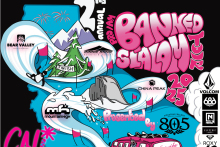Current Road Conditions
Updated: March 14 2025 1:11 PM PDTHwy 2 from Hwy 138 - Open with no restrictions Largo Vista/Big Pines Hwy - Open with no restrictions
SoCal Travel Information
Click here for updated Caltrans road conditions for the Los Angeles / Inland Empire / Mountain Areas
Winter Driving Tips From Caltrans
Caltrans officials urge you to check road conditions often. To help keep you abreast of changing conditions, Caltrans operates the Caltrans Highway Information Network which motorists may telephone for up-to-the-minute information (800) 427-7623. The network is updated as conditions change.
- Make sure your brakes, windshield wipers, defroster, heater and exhaust system are in top condition.
- Check your antifreeze and be ready for colder temperatures. You may want to add special solvent to your windshield washer reservoir to prevent icing.
- Check your tires. Make sure they are the properly inflated and the tread is in good condition.
- Always carry chains when traveling in the winter mountains. Make sure they are the proper size for your tires and are in working order. You might also want to take along a flashlight and chain repair links. Chains must be installed on the drive wheels. Make sure you know if your vehicle is front or rear wheel drive.
- Other suggested items to carry in your car are an ice scraper or commercial deicer, a broom for brushing snow off your car, a shovel to free your car if it's "snowed in", sand or burlap for traction if your wheels should become mired in snow and an old towel to clean your hands.
- It is also a good idea to take along water, food, warm blankets and extra clothing. A lengthy delay will make you glad you have them.
- Put an extra car key in your pocket. A number of motorists have locked themselves out of their cars when putting on chains and at ski areas.
Driving Tips
- Give yourself extra time. Trips to the mountains can take longer during winter, especially if you encounter storm conditions or icy roads. Get an early start and allow plenty of time to reach your destination.
- Keep your gas tank full. It may be necessary to change routes or turn back during a bad storm or you may be caught in a traffic delay.
- Keep windshield and windows clear. You may want to stop at a safe turnout to use a snow brush or scraper. Use the car defroster and a clean cloth to keep the windows free of fog.
- Slow down. A highway speed of 55 mile an hour may be safe in dry weather but an invitation for trouble on snow and ice. Snow and ice make stopping distances much longer, so keep your seat belt buckled and leave more distance between your vehicle and the vehicle ahead. Bridge decks and shady spots can be icy when other areas are not. Remember to avoid sudden stops and quick direction changes.
- Be more observant. Visibility is often limited in winter by weather conditions. Slow down and watch for other vehicles and for snow equipment. Even though snow removal vehicles have flashing lights, visibility may be so restricted during a storm that it is difficult to see the slow moving equipment.
- When stalled, stay with your vehicle and try to conserve fuel while maintaining warmth. Be alert to any possible exhaust or monoxide problems.
Chain Requirements
- R1 and R2 are the most common conditions. The highway is usually closed before an R3 condition is imposed.
- You must stop and put on chains when highway signs indicate chains are required. You can be cited by the California Highway Patrol and fined if you don't. You will usually have about a mile between "Chains Required" signs and the checkpoint to install your chains.
- Control areas can change rapidly from place to place because of changing weather and road conditions.
- The speed limit when chains are required is 25 or 30 miles and hour and will be posted along the highway.
- When you must put on chains, wait until you can pull completely off the roadway to the right. Do not stop in a traffic lane where you will endanger yourself and block traffic.
Chain Info
- R1: Chains or snow tires required.
- R2: Chains required on all vehicles except four-wheel drives with snow tires.
- R3: Chains required on all vehicles. No exceptions.
Chain Installers
If you use the services of a chain installer, be sure to get a receipt and jot the installer's badge number on it. Remember, chain installers are independent business people, not Caltrans employees. Having the badge number may help with any misunderstandings later. Chain installers are NOT allowed to sell or rent chains.
When removing chains, drive beyond the signs reading "End Chain Control" to a pull-off area where you can safely remove them.












